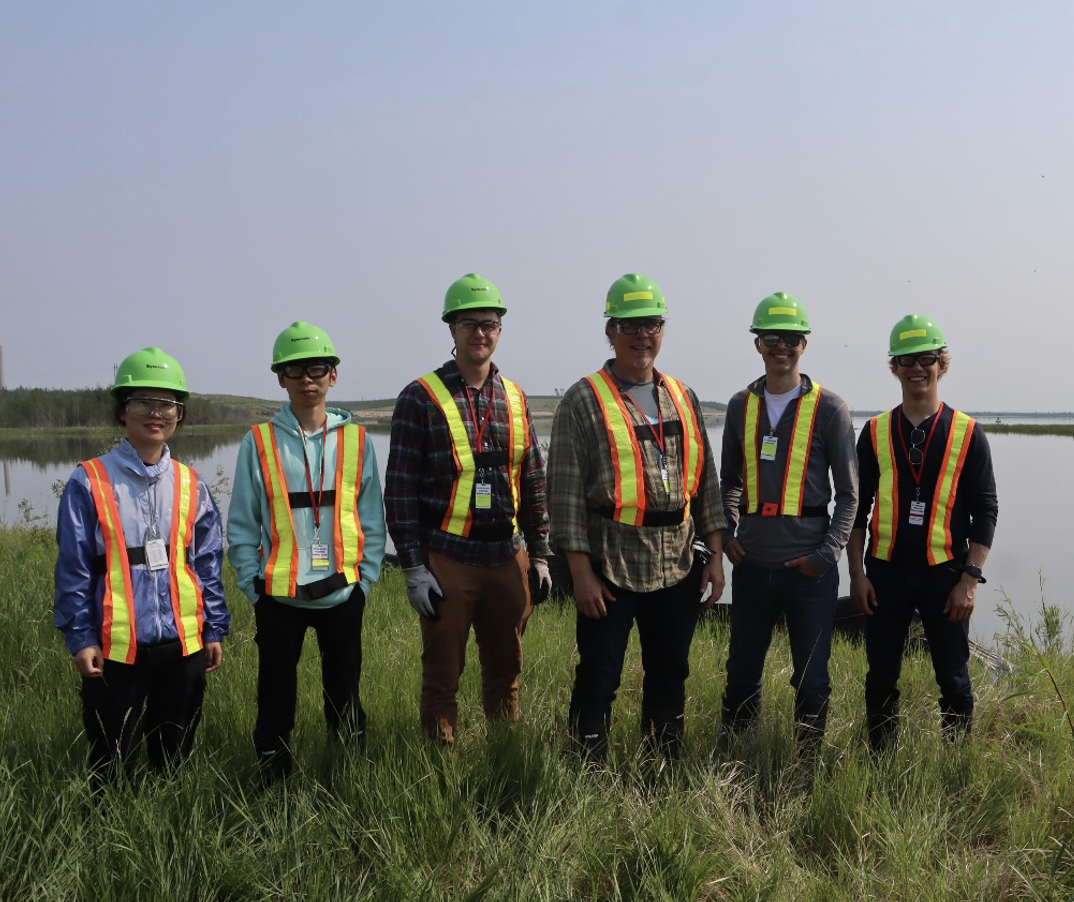My research interests focus on understanding the fate and transport of organic compounds, contaminants in particular, in the environment and the fundamental role played by microbial processes in controlling the cycling of these compounds. Research in my lab uses both traditional and novel techniques to investigate questions relating to topics ranging from organic contaminant sources and biodegradation in the environment to the metabolic processes and bio-signatures associated with microbial metabolism and carbon cycling in extreme environments. The common theme in this research is investigation of the fundamental properties, chemical principles and microbial factors that control the behaviour of organic compounds in the environment. Understanding these controls provides essential information to assess contaminant behaviour, the associated risks, and how to effectively clean up contamination. It also forms the basis of our ability to identify and interpret the biosignatures left by microbial life in the geologic record or on other planets.
Overview
Current research projects investigating the behaviour of organic contaminants in the environment include; investigating the sources and microbial metabolism of petroleum contaminants in Hamilton Harbour, Ontario Canada; determining PAH deposition trends to remote regions in northern Ontario; determining the effects of changes in microbial diversity on contaminant degradation and demonstrating petroleum remediation using new approaches in compound specific radiocarbon analysis. These projects will provide greater understanding that will enable more effective remediation of contaminated sites as well as effective policy decisions to prevent future impacts.
Syncrude’s Base Mine Lake, Oil Sands Mine Reclamation Site, Fort McMurray, Alberta
Base Mine Lake is a long-term project designed for oil sands mine site reclamation and proper tailings disposal. It is the first and currently the only full-scale commercial demonstration of water-capped tailings technology in a pit lake in the oil sands industry. Base Mine Lake consists of a mined-out oil sands pit partially filled with fluid tailings that sits below a cap of oil sands process-affected water and fresh/environmental water. Dr.Slater’s group is focused on characterizing biodegradable compounds, investigating methane cycling within the tailings, and exploring their impact on organic transport in Base Mine Lake.
MICROBIAL METABOLISMS IN EXTREME ENVIRONMENTS
Overview
Current research into microbial metabolism in extreme environments involves field studies as several sites considered to be good analogue environments for astrobiology research. Astrobiology is the search for life in the universe, but the first requirement for this research is to understand life and its signatures on earth. This research stream involves field projects in the deep terrestrial subsurface in Ontario, in alkaline lakes in central British Columbia, in alkaline lakes in the Yucatan Peninsula, Mexico, in alkaline lake Sevan, Armenia, and in springs on Axel Heiberg Island, Nunavut. The goals of these research projects are to understand the processes which support life in extreme environments, and the biosignatures that they leave behind. This research will contribute to our ability to interpret the geologic record of the origins and evolution of life on earth. This research stream is also of interest in the field of Astrobiology as understanding the origins and evolution of life on earth will provide a basis to interpret bio-signatures of life on other planets such as Mars.
Arctic springs of Axel Heiberg Island, Nunavut
The springs on Axel Heiberg Island, near the McGill Arctic Research Station located along Expedition Fjord near the termini of White Glacier and Thompson Glaciers, have been identified as a terrestrial permafrost sites that host microorganisms capable of microbially-driven anaerobic oxidation of methane and an analogue site for life beyond Earth. We are interested in characterizing the methane and other organic volatiles in these perennial arctic springs and relate these to microbial production and cycling of dissolved organic matter (DOM) and inorganic carbon (DIC) within the system. A variety of techniques are being utilized including stable carbon isotope analysis of DIC and microbial lipids within the system, radiocarbon analysis of DIC, and FTICR-MS analysis to characterize DOM.
Modern freshwater microbialites from Mexico and Armenia
This project focuses on studying microbialites—rock-like structures formed by communities of microorganisms. These fascinating formations are among the earliest records of life on Earth, and studying them helps us understand how life adapts to changing environments. We examine microbialites from two unique freshwater locations: Cenote Azul in Mexico and Lake Sevan in Armenia. Using 3D modeling, geochemical analysis, and stable carbon isotopes, we investigate how these microbialite communities respond to different environmental conditions. This work reveals patterns of structural complexity and organic composition, offering insights into how life persists in challenging settings.
ORGANICS IN METEORITES AND METEOWRONGS
Meteorite Organic Inventory
The chemical inventory of meteorites are advantageous in informing which molecules were available in the interstellar medium and on early Earth. From this inventory, prebiotic synthesis reactions can be tied back to the compounds that were present and allows for the deduction of formation conditions of organic molecules such as pressure and temperature. Furthermore, the prebiotic inventory can aid the in characterization of abiotic versus biotic production of organic compounds. As the true origin on life remains unknown, defining biosignatures from abiosignatures will be essential in this fundamental question in the field of astrobiology.









